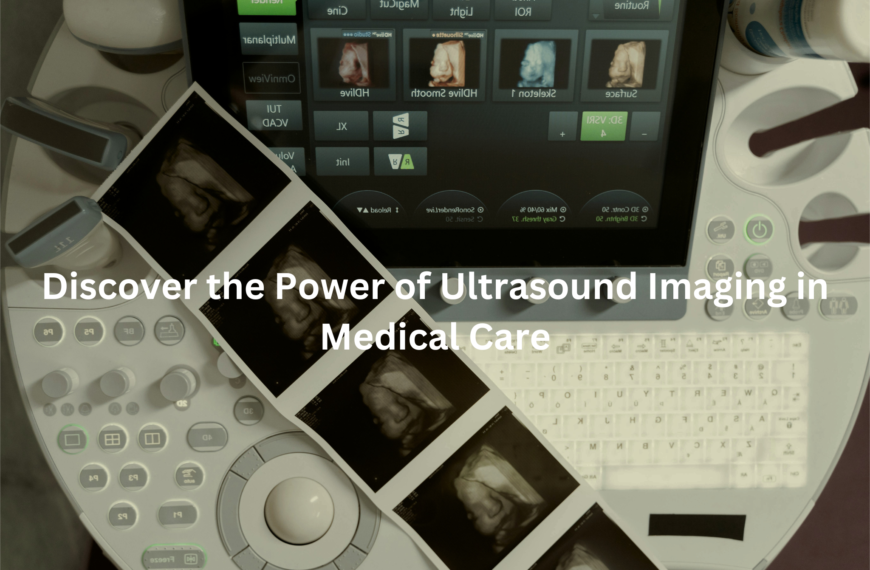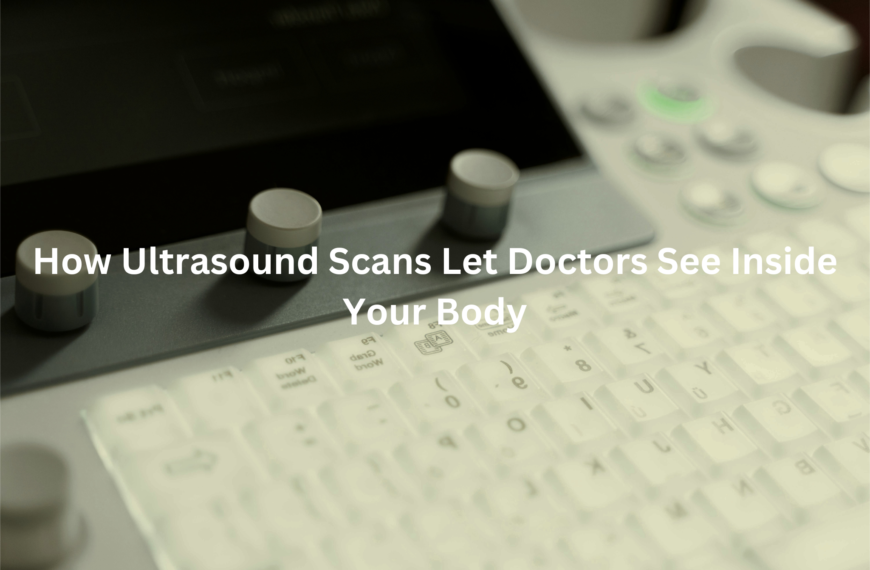Learn how CT scans provide detailed images for quick, accurate diagnoses, enhancing your treatment options.
CT scans are vital tools in modern medicine, providing clear cross-sectional images of the body. By using X-rays combined with computer technology, these scans help doctors detect conditions early, assess injuries, and guide medical procedures. With their speed and accuracy, CT scans are crucial in diagnosing cancer, trauma, and other health issues effectively.
Key Takeaways
- Detailed Imaging: CT scans produce detailed 3D images of internal structures, aiding in accurate diagnosis.
- Non-Invasive: The scan is quick and non-invasive, offering a safer alternative to surgery for diagnosis.
- Wide Applications: CT scans are used for cancer detection, trauma assessment, and guiding medical procedures.
How CT Scans Work
CT scans, or computed tomography scans, are an advanced medical imaging tool used to look inside the body without surgery. The technology behind them is fascinating and has helped countless people receive quicker and more accurate diagnoses.
The basics of how CT scans work involve X-ray tubes and detectors that work together to create detailed images, which doctors then use to see what’s happening inside. (1)
X-ray Tube and Detectors
The heart of a CT scanner is the X-ray tube and detectors. The X-ray tube emits X-rays, which are absorbed by various tissues in the body to different extents. Dense materials, like bone, absorb more X-rays than softer tissues, like muscles or fat.
The detectors, placed opposite the X-ray tube, capture these X-rays after they pass through the body. These detectors then send the information to a computer, where it is processed into an image.
Rotating Gantry and Data Processing
The gantry is the part of the CT scanner that houses the X-ray tube and detectors. It rotates around the body as the patient lies still on a table. The rotation allows the scanner to capture images from multiple angles. The computer then takes all this data and reconstructs it into cross-sectional images, called slices, of the body.
These slices are stacked together to create a detailed, three-dimensional image that allows doctors to get a clear look at the body’s internal structures.
Imaging Process and Patient Preparation
Before a CT scan, patients usually need to be in a specific position to ensure that the images come out clear. The preparation process is quick but important for getting the most accurate results.
Patient Positioning
Patients typically lie down on a narrow table that slides into the CT scanner. Sometimes, they may need to adjust slightly to ensure the right area is being scanned. It’s common for patients to be asked to hold their breath for a few moments while the scan is being performed. This helps to avoid blurry images caused by any movement.
Image Acquisition
Once the patient is in position, the X-ray tube rotates around them, emitting beams that pass through the body. As the X-rays interact with the body’s tissues, they get absorbed at different rates, creating distinct images of bone, soft tissue, and other internal structures.
This process produces cross-sectional slices that are then sent to the computer for further processing.
Use of Contrast Agents
In some cases, contrast agents are used to improve the quality of the images, especially when it’s necessary to examine blood vessels or soft tissues. These agents help to make specific areas stand out, allowing doctors to get a clearer view of what’s going on.
Purpose of Contrast Agents
Contrast agents are substances that can be ingested orally or injected into the bloodstream, depending on the area being examined.
For example, oral contrast might be used to enhance the visibility of the intestines, while intravenous contrast can help highlight blood vessels and organs. They help create a clearer image by making certain areas of the body stand out more clearly than others.
Types of Contrast
- Oral Contrast: Often used for imaging the digestive system.
- Intravenous Contrast: Injected into the blood to highlight organs and blood vessels.
CT Scans vs Other Imaging Methods
Credits: UCSF Imaging
CT scans aren’t the only imaging method available to doctors. While other methods such as X-rays and MRI scans are also commonly used, they have key differences in how they operate and what they can show.
CT vs MRI
The primary difference between CT scans and MRI (Magnetic Resonance Imaging) scans is the technology used. CT scans use X-rays to create detailed images, whereas MRI uses powerful magnets and radio waves.
CT scans are generally faster, which makes them better suited for emergency situations, while MRIs are often preferred for soft tissue images. MRIs tend to have better resolution for soft tissues but take longer to complete.
CT vs X-rays
While both CT scans and traditional X-rays use radiation, CT scans provide much more detailed images because they capture multiple slices of the body. X-rays only give a two-dimensional picture, which can make it harder to see complex conditions.
A CT scan, on the other hand, provides three-dimensional images that allow doctors to see the body from different angles.
Applications of CT Scans
CT scans are incredibly versatile and have many uses in medical diagnostics. From detecting cancer to guiding surgeries, they’ve become indispensable for doctors.
Cancer Detection
One of the most important uses of CT scans is in detecting cancer. CT scans can identify tumours and help doctors monitor their size and location. By doing this, doctors can make informed decisions about the best treatment options.
Trauma and Injury Assessment
CT scans are invaluable when it comes to assessing trauma or injury. They can give doctors detailed views of fractures, bleeding, or other internal injuries that may not be immediately visible through a physical exam. Whether from an accident or a sports injury, a CT scan can provide crucial information in emergency situations.
Guiding Procedures
CT scans also help guide doctors during surgeries or minimally invasive procedures. For example, during a biopsy, a CT scan can help the doctor find the exact location of the tumour to ensure the sample is taken from the right spot. (2)
Benefits and Advantages of CT Scans
CT scans provide several advantages, making them a preferred choice for doctors when they need to get a clear, accurate picture of what’s happening inside the body.
High Resolution and Speed
One of the biggest benefits of CT scans is their ability to produce high-resolution images quickly. In an emergency, time is of the essence, and CT scans can provide the necessary information in just a few minutes.
Non-invasive
Another advantage of CT scans is that they are non-invasive. There’s no need for surgery, which reduces the risks for the patient. For many medical conditions, a CT scan can provide all the information a doctor needs without the need for more invasive procedures.
Risks and Limitations
Despite their many advantages, there are some risks and limitations to be aware of when it comes to CT scans.
Radiation Exposure
Since CT scans use X-rays, they involve exposure to ionising radiation. While the amount of radiation used in a CT scan is generally safe, it’s still something to consider, particularly with frequent use. The risk of radiation is higher in young children and pregnant women, so doctors are careful about when and how often they use CT scans in these groups.
Cost Considerations
CT scans are more expensive than other imaging methods, such as X-rays or ultrasounds. They also tend to be less readily available in some parts of the world, making them less accessible to some patients. However, the cost may be justified by the speed and accuracy of the scan, especially when it’s needed for an urgent diagnosis.
Safety Guidelines and Radiation Dose Management
Because CT scans involve radiation, it’s essential to take steps to minimise exposure whenever possible.
Minimising Radiation
To keep radiation exposure to a minimum, doctors make sure to only order CT scans when necessary. They also use the lowest possible dose of radiation that will still provide clear images. This ensures that patients aren’t exposed to more radiation than required.
Low-Dose CT Scans
There have been advancements in low-dose CT scans, which can reduce the amount of radiation involved in the scan. For instance, in lung cancer screenings, low-dose CT scans are used to detect cancer in its early stages while minimising radiation exposure to patients.
Conclusion
CT scans are an incredible tool in modern medicine. Their ability to create detailed images quickly and non-invasively makes them essential in diagnosing and treating a variety of conditions, from cancer to trauma.
However, like all medical procedures, they come with risks, such as radiation exposure, and should be used appropriately. By understanding how CT scans work, the benefits they offer, and their limitations, patients can make informed decisions about their healthcare.
FAQ
What are contrast CT scans used for?
Contrast CT scans are helpful in identifying issues in various parts of the body, including soft tissue, blood vessels, and bones. These scans provide detailed images that help doctors see what’s happening inside your body, making it easier to diagnose conditions like tumours, fractures, or infections. They can also help detect problems with the heart or blood clots by highlighting blood vessels clearly.
How do contrast CT scans work?
A contrast CT scan uses special x-ray equipment to take cross-sectional images of the body. The x-ray tube and detectors work together to capture images from different angles, creating detailed slices that are then combined into a 3-D image. This process allows doctors to look at internal structures in detail, like soft tissues and blood vessels, that might be harder to see in regular X-ray scans.
Are contrast CT scans safe?
Contrast CT scans are generally safe, but they do involve some radiation exposure. Although the risk of cancer from a single scan is low, repeated scans over time might increase the potential risk. To reduce this risk, healthcare providers try to limit the number of scans you need and may choose lower radiation dose options when possible. It’s always good to talk to your health professional if you’re concerned about the amount of radiation you’re getting.
What are the potential side effects of contrast CT scans?
Some people may experience a metallic taste in their mouth or feel warm or flushed during a contrast CT scan. These sensations are usually temporary and go away soon after the scan is done. Rarely, some may have an allergic reaction to the contrast agent, which is why it’s important to inform your healthcare provider if you have any allergies before the scan.
How is a contrast CT scan different from traditional X-rays?
Unlike traditional X-rays, which only provide a single view of the body, contrast CT scans create cross-sectional images or slices of the body. This allows doctors to see more detailed images of internal structures from different angles. In some cases, CT imaging might be used to get a clearer view of soft tissues and blood vessels, which are not as easily seen with regular X-rays.
Are contrast CT scans more expensive than regular X-rays?
Yes, contrast CT scans are typically more expensive than traditional X-rays. This is because CT scans use advanced technology to capture more detailed images and require special x-ray equipment and processing. However, despite the higher cost, they provide more information that can help with diagnosing conditions more accurately.
How long does a contrast CT scan take?
The time it takes for a contrast CT scan can vary, but it is usually quite quick. Most scans take only a few minutes. You’ll be asked to lie on a narrow table, which will move into the scanner while the X-ray tube rotates around your body to take the necessary images. If you need to hold your breath, this usually only lasts for a few seconds.
Can I go back to my normal activities after a contrast CT scan?
Yes, most people can return to their normal activities immediately after a contrast CT scan. Unless you were given a sedative for the procedure, there are typically no restrictions on your activities. If you experience any side effects, such as feeling unwell or having a reaction to the contrast agent, contact your healthcare provider.
How accurate are contrast CT scans?
Contrast CT scans provide highly detailed images that are often more accurate than traditional X-rays for certain conditions. They can help identify bone fractures, soft tissue issues, blood clots, and other abnormalities. However, for some conditions like brain tumours or soft tissue issues, a magnetic resonance imaging (MRI) might offer better resolution, so your healthcare provider will choose the best imaging method based on your symptoms.
References
- https://brightonradiology.com.au/?gad_source=1&gclid=Cj0KCQiAhbi8BhDIARIsAJLOlucyNIQQMBTRNDhIlajL1_0ktNiw-lEmmZ4eGbAw_JIi8awfAZouSigaAoUpEALw_wcB
- https://www.insideradiology.com.au/spect-ct-scan/




